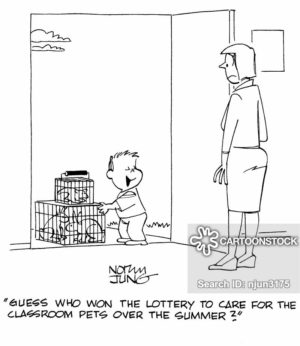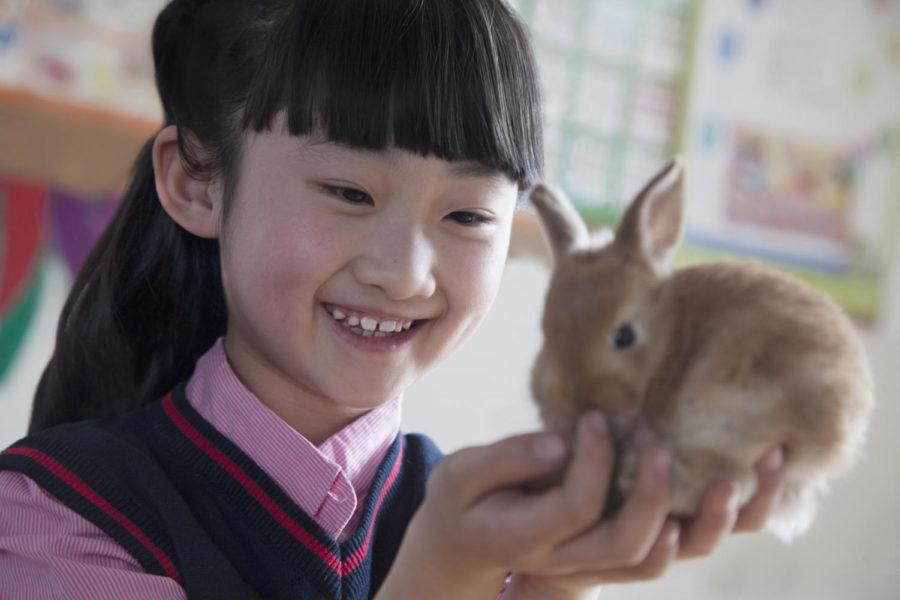Furry classmates
September 5, 2019
When it comes to a new school year, parents always say to make new friends—but what if that friend is a creature that resides in the classroom? Many teachers across the nation decide to keep rodents, lizards and fish in the classroom as a way to enrich the environment. Over all, there are numerous benefits, but also drawbacks of having classroom pets.
The most prominent reason for keeping class pets is the fact that they can provide students with hands-on education. With all the technological advances in classrooms, students have devoted more time to electronic devices than ever before. However, according to Pets in the Classroom, students can assemble a bond with the natural world if class pets are introduced. Many teachers allow students to take turns to care of the animals, such as changing the drinking water or refilling the food bowl. Learning the basics of care and maintenance are tangible ways to prepare students for forthcoming responsibility.
Besides responsibility, classroom pets can also help the youth acquire empathy. By caring for animals, they learn respect for living things and their needs. This enhances their awareness of the feelings of others.
Students can also succeed by grasping important lessons from animals. According to the American Humane Organization, more than 70 percent of teachers with class pets say these animals assist students with learning experiences. Instead of redundant lectures or worksheets, these creatures allow for a creative extension to the curriculum. Whether it be mathematics, science or art, projects can be developed to center around the class pet. For instance, Scholastic News explains that teachers can integrate these animals into math lessons by calculating how much it costs to feed the pet for a year.
“I think that class pets can help some students have a bigger connection with the classroom,” says Mrs. Dionne, a Biology teacher at Glenbard South High School. “It’s fun, and sometimes we can get biology lessons out of it.”
Likewise, living creatures can also be a positive impact on students by serving as a motivator. They are more likely to display enthusiasm and engage in the lessons when the pets are involved. “You can even do rewards with certain students—if they do their homework or if they’re behaving, they can get time with the class pet,” says Mrs. Dionne.
However, some schools do prohibit animals in the classroom. Various teachers claim class pets can pose as a huge distraction to adolescents, especially those in early elementary grades.
Similarly, Study International News wonders if having classroom pets is an unethical trend. They point out that if not careful, students can drop the pets or handle them too roughly. Not only that, a classroom can sometimes be an unhappy habitat for animals. Most of them are kept in confined cages, and their natural instincts cannot be sustained. For example, People for the Ethical Treatment of Animals (PETA) says one of the most common classroom pets is a hamster, which happens to be one of the worst as well. Hamsters and other small rodents are nocturnal, which implies they sleep during the day. Yet, they are located in brightly lit rooms and constantly get removed from their cages. Unfortunately, this disrupts their sleep patterns and can be distressing for them.

The potential for injury or infection is also present when it comes to classroom pets. Animals—even small ones like hamsters—can be messy and emit a foul odor if not maintained appropriately, which can spread bacteria. It is crucial that teachers put some time into research and consider the best option for the class.
Fortunately, the good news is that schools can still partake in having classroom pets—but without traditional pets. Teachers can designate stuffed animals as “pets;” therefore maintenance will not be as much of an issue. This is also an optimal alternative for students with allergies or schools with insufficient funds.
As a result, animals are definitely not for every classroom, but they can definitely contribute to an exceptional learning opportunity for students who are mature enough to handle them.































